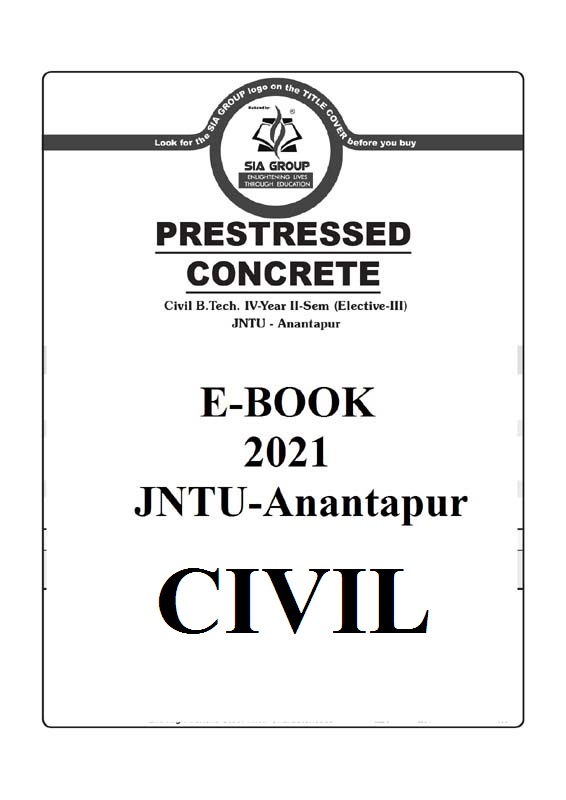

Note: Please check your Spam or Junk folder, in case you didn't receive the email with verification code.
SYLLABUS
UNIT-I
Introduction Historic development – General principles of prestressing pretensioning and post tensioning – Advantages and limitations of prestressed concrete – Materials – High strength concrete and high tensile steel their characteristics. Methods of Prestressing Methods and systems of Prestressing – Pre-tensioning and post-tensioning methods – Analysis of Post tensioning – Different systems of prestressing like Hoyer system, Magnel system, Freyssinet system and Gifford – Udall system.
UNIT-II
Losses of Prestress Loss of prestress in pre-tensioned and post-tensioned members due to various causes like elastic shortening of concrete, shrinkage of concrete, creep of concrete, relaxation of stress in steel, slip in anchorage, bending of member and wobble frictional losses.
UNIT-III
Analysis and Design of Sections for Flexure Elastic analysis of concrete beams prestressed with straight, concentric, eccentric, bent and parabolic tendons – Allowable stress, Design criteria as per I.S. code – Elastic design of simple rectangular and I section for flexure – Kern – Lines – Cable profile.
UNIT-IV
Design of Section for Shear Shear and principal stresses – Design for shear in beams. Composite Sections Introduction – Analysis of stress – Differential shrinkage – General designs considerations.
UNIT-V
Deflections of Prestressed Concrete Beams Importance of control of deflections – Factors influencing deflections – Short term deflections of uncracked members prediction of long time deflections.
 No Preview is available for this book
No Preview is available for this book

 Get 100 instant uPoints on the purchase of Rs.100 or above for each order.
Get 100 instant uPoints on the purchase of Rs.100 or above for each order.
CategoriesEngineering

Format PDF

TypeeBook